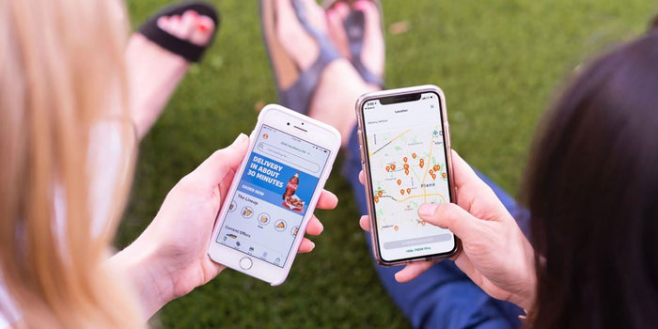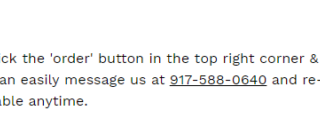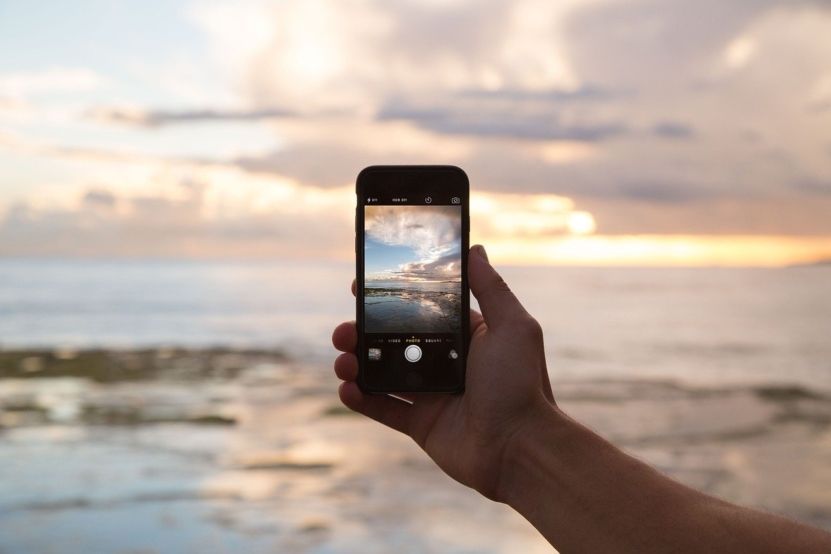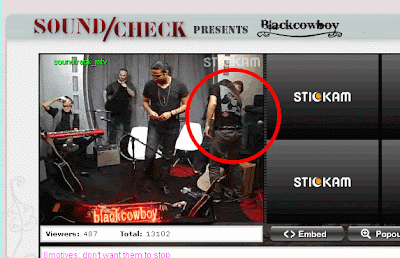The smartphone is the future of commerce. How the phone has changed the way we shop
No one needs convincing that smartphones have become our everyday life. Many of you are reading this text on your phones, by the way, in general internet traffic has long been dominated by the mobile one. When leaving home we usually only need three things – keys, wallet and phone. And even so, the phone can already replace some of us with house keys, and most of us with a payment tool.
Smartphone is an extension of the human hand. It's also natural for commerce to use it to order clothes, food or services from anywhere, check availability in store or simply learn more about a product before buying. But these aren't all the ways that retail chains can improve our shopping experience today and in the store of the future.
Applications are everywhere
There is a reason why it is said that there is an app for everything – and retail is no exception. Applications allow customers to be loyal, allowing them to buy goods cheaper, guaranteeing better after-sales service or even creating processes available only to application users.
One of the experts in this matter is Starbucks, which has been combining mobile in the offline store for a long time. Using their app, customers can order and pay for their coffee even before they enter the coffee shop. When this one is ready, they just have to pick it up from a special point in – and recently and in front of – Starbucks.
Chinese coffee shop chain Luckin Coffee has gone one step further – there the entire service process in the restaurant is based on an application. All orders and payments are made in Luckin Coffee application. Customers who place an order off-premises receive a notification that they can pick it up. In addition, there is also the possibility of ordering with delivery. As the chain requires the customer to have an app in order to order anything, think of what opportunities this provides to get to know them, and to tailor offers to their preferences.
I've already written about the Nike Fit app, which helps you get the perfect shoe size when shopping online. A similar solution has also been decided by Gucci, which by means of AR helps you virtually try on shoes – mainly to see how they look on the leg. AR in general is popular in store apps – from Ikea to Amazon – e.g. making it easier to visualize furniture in your living room.
SMS is still alive
What is somewhat surprising, but many retail chains in the West regularly use SMS to contact their customers. And it's not just about the SMS with information about the promotion on a particular day, but about the whole shopping process. Not without significance here is the ease and convenience of SMS – no need for a dedicated app or even internet access.
An interesting example is the producer of Dirty Lemon drinks – it accepts orders for its goods only by SMS. After registering on the website, it is enough to send the company an SMS to order drinks. Payment details are provided during registration, so you don't have to do it with every order. Dirty Lemon has extended SMS service to its unmanned store in New York City. Customers who want to buy a drink there have to go through the full process of sending an SMS telling them what they are buying and that they have already paid. The whole thing is strongly based on mutual trust, but Dirty Lemon counts it as a cost, and treats the store in New York as a marketing channel and promotion of the whole network.
Walmart is also testing SMS ordering in its new Jetblack service. This virtual concierge is designed for busy big city parents. Users can send an SMS to request specific merchandise – not necessarily from Walmart's range.
A certain variation on SMS is the use by Mein Hoffi, a German convienience chain, of the WhatsApp app to order drinks and even send a request for them to be chilled. The chain has a system that can reduce the temperature of a bottle of prosecco in five minutes. You can use messenger to order a chilled bottle in advance and then pick it up ready to drink.
Location matters
The popularity of smartphones has given new opportunities to use geolocation in the shopping process.
Seoul-based restaurant The Burger Laboratory, like many others, lets you order food in advance using your phone and pick it up when it's ready. An interesting fact is that using the knowledge of the customer's location, The restaurant prepares the meal so that it is ready (i.e. fresh and hot) exactly at the moment of its arrival. If the orderer stops or takes a longer route, the restaurant will hold the preparation of the meal until an appropriate moment.
Some time ago we wrote about Nike SNKRS app, which used the user's location to sell limited edition sneakers prepared together with Kendrick Lamar.
And 7-Eleven, the US convienience chain, recently released its 7NOW app. Users can use the app to order delivery to selected points in public places – in front of stadiums, parks or on the beach (the so-called. 7NOW Pins). When the app is opened, the user is located and shown the nearest point (Pin) to which they can order purchases. Once the order is placed, the courier will deliver the goods within 30 minutes at most. There are no quota limits, and the service is available 24/7.

Unusually, location is being used by fashion company Ivyrevel. In partnership with Google, they have created the Coded Couture project, where the user designs their own clothing. The first implementation is Data Dress, which uses data from a smartphone to design a personalized dress.
How it works? After downloading the Coded Couture app and choosing whether the dress should be formal, business or more party-oriented, the app tracks our activity in order to propose a design on this basis. For example, a morning jog can become a pattern on a dress, and whether you live in a warm or cool place on your choice of fabric. A similar influence will be exerted by whether and to what restaurants we go, whether we visit museums or what transport we use. During the weekly review you can check the progress of the project and make your own corrections.
The phone is also useful in the store itself. The range of possibilities for its use in the store during the shopping process is virtually endless.
One of the best examples is the Nike House of Innovation 000 store in New York City (main image in article). The entire space is designed to interact with the Nike app. Customers can use the app to scan merchandise and pay for it without going to the cash register. She can also scan a QR code from a mannequin to see exactly what clothes she is wearing and check their availability in the showroom, sizing, and even order them to the fitting room.
The smartphone is integral to the so-called stores of the future
In the stores of the future, the burden of identification is shifting from cash registers, where we used to pay, to the entrance gate of the store, and the smartphone is our unique ID. In Amazon Go the only thing we need to do is to register in the dedicated app and scan it at the gates at the entrance. At this point, we are identified, and our shopping activities are taken over by cameras that track what we do in the store and when we leave (completely without cash registers) automatically download the value of the bill from the payment card plugged into the app.
It works similarly in other stores, including in Poland. W Bio Family, the first self-service store in Poland, we can do shopping at any time of day or night, on any day of the week. All you have to do is sign up for the app and scan it at the entrance. Similarly, in Poznan Take&Go, Which by design (although not in the technological layer) resembles Amazon Go. There, the application is used both to enter the store and during checkout of purchases in the so-called. checkout zone, where the customer identifies himself with an application, and thanks to RFID tags his purchases add up – all he has to do is pay.
Smartphones allow simple and fast mobile payments in stores
Both fully automatic, as in Amazon Go, but also slightly less advanced – for example, using QR codes.
QR uses China's WeChat, which allows for easy payments even without integration with the retailer's POS system. Almost every retailer in China has its own unique QR code. During the transaction, the customer peaks the code with his phone, enters the amount he wants to pay and authenticates the transaction with PIN. At this point, the money goes into the seller's account.
Does commerce have a future without the smartphone?
The smartphone has become a permanent part of the shopping experience. Whether as a communication channel, a place where we can place an order or as a new way of payment.
It has become an integral part of making our shopping experience faster, simpler and more personalized.


